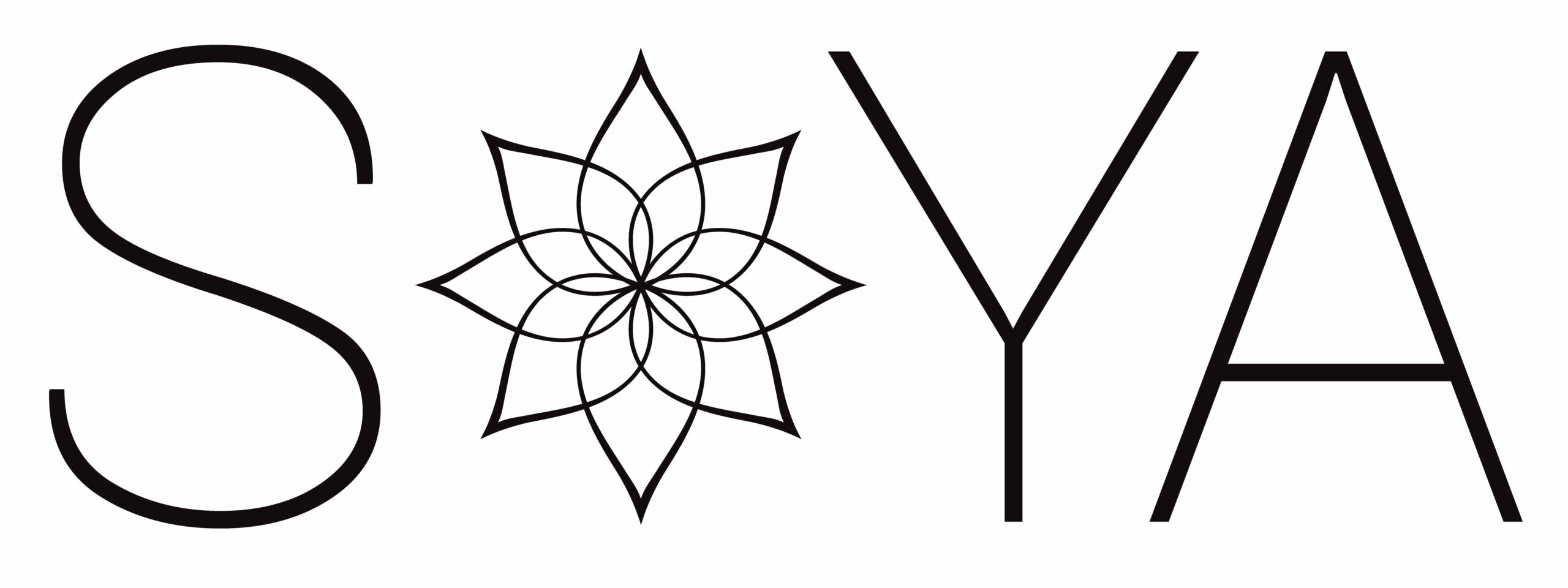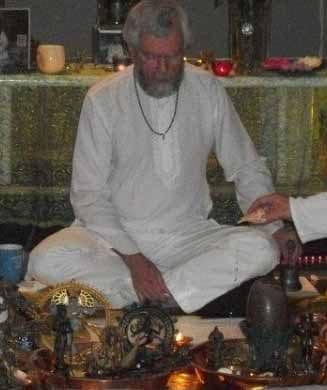By Bill Francis Barry
The growth of interest in yoga and Kirtan has contributed to an increased interest in mantra. Mantra repetition, which is also known as japa, can be performed in different ways. What are the different forms of mantra repetition, and the relative benefits of those forms?
Five Forms of Mantra Practice
1.) Vocal (also called vaikhari japa) is the audible chanting of mantra.
2.) Whispering (upamshu japa) involves softly chanting, where the lips & tongue are moving but no one nearby can hear.
3.) Silent (manasika japa) is the fully internal, mental repetition of the mantra, with absolutely no movement of lips or tongue. Lips, tongue and mouth remain totally relaxed and motionless.
4.) Silent coordinated with breath. This is variation on manasika japa where the silent mantra repetition is coordinated with the breath (but lips, tongue and mouth remain totally motionless).
5.) Written (Likhita japa) is the practice of focused written repetition of mantra.
While each of these forms of japa are powerful and beneficial, many people find vocal mantra chanting to be easier. However, master yogis such as Swami Vivekananda & Swami Sivananda taught that manasika (silent) mantra practice provides extraordinarily unique benefits relative to other forms of mantra practice.
Before we continue, some readers may just want to know: What is the best form of mantra practice?The very best form of mantra practice is that form which you will practice daily, as taught by your teacher. The great wisdom of this point, which I learned from my teacher Namadeva Acharya (Thomas Ashley-Farrand), is that different people gain great benefits from different methods of mantra practice. The ‘right’ practice for one person, can be different for another.
Now, it is important to understand that vocal, whispering and silent japa involve different ranges of vibration, scope of influence, and therefore benefits. Vocal chanting, as a physical vibration, has its primary effect on our physical body and a less direct (though still beneficial) effect on our chakras, nadis (energy meridians) and our mind. Silent japa, being non-physical, works differently within our subtle body where our chakras and nadis are located. So, depending on our intention for mantra practice, there can be advantages of one form over another. For example if one’s intention involves healing or physical manifestation, vocal chanting is of great value.
The “Highest” Form of Mantra Practice
Relative to vocal or whispering mantra practice, silent mantra chanting produces the “highest” benefits according to respected master yogis such as Swami Vivekananda, Swami Sivananda, Ramana Maharshi, and Sadguru Sant Keshavadas. This same teaching is found in scriptures such as the Vishnu Purana, the Shiva Purana and the Agni Purana. The great Swami Sivananda, in his book “Japa Yoga” explains this teaching of manasika (silent) mantra practice producing the greatest benefits and he also describes the differences of whispering japa as distinct from vocal and silent. Two other explanations of this highest form of mantra practice are provided by Swami Vivekananda in the book “Raja Yoga in Brief”[iv] and by Sadguru Sant Keshavadas in his book “Sadguru Dattatreya”.
Swami Sivananda, Japa Yoga, A Comprehensive treatise on Mantra-Sastra , 14th edition, 2010, page 95
Sadguru Sant Keshavadas, “Sadguru Dattatreya” 1988, page 123
This involves the teachings of the Pancha Koshas, the 5 vital sheaths(covers) surrounding the atman (& the Hrit Padma). The Subtle Body, is said to include three sheaths: the pranamaya kosha(pranic body); the manomaya kosha(mind sheath) and the vijanamaya kosha(the intellect sheath). The chakras and nadis are located within the Subtle Body. The source of much of this teaching is in the Upanishads as explained by advanced yogis.
See also, Swami Vivekananda, The Complete Works of Swami Vivekananda, 9 volumes., Calcutta: Advaita Ashrama, 1–8, 1989; 9, 1997, 1.190.
With reference to the three gunas[i], Sadguru Sant Keshavadas explains that loud vocal chanting works to remove a person’s tamasic negative qualities and whispering japa works to purify rajasic influences. He also stated that when a person’s mind is more tranquil or dominated by sattvic qualities their experience with manasika (silent) mantra practice is easier.
It is important to note that this teaching of the “highest” form of mantra practice, is referring to mantra practice that involves seated, eyes-closed, silent repetition of mantra, with no movement of the tongue or lips. This is not mantra practice based upon mood making or performances with musical instruments. Silent manasika mantra meditation involves experiencing the more subtle (which means more powerful) vibrations created internally by the mantras. During silent mantra practice, the internalization of our focus is consistent with the yogic teachings of Pratyahara (shifting the awareness from the external to an internal focus). With sustained daily practice, this eventually leads the silent mantra chanter to the vast treasures of inner peace, attunements resulting in increased energies followed by greater clarity of mental and spiritual consciousness.
Silent Japa, coordinated with breath. I’ll preface this section by stating that pranayama practices should be done according to the instructions of a qualified yoga teacher. Having said that, some teachers, including my paramguru Sant Keshavadas, taught that the silent count of the length of each breath’s inhalation or exhalation could be accomplished using a mantra instead of a numeric count. For example, one would select a mantra which, when chanted silently one or several times, would represent the length of the inhalation, and then use the same number of repetitions to represent the period of exhalation. If the practice involved a ratio where the exhalation was twice as long as the inhalation, the number of silent mantra repetitions would be doubled, for each exhalation. Acknowledging that this approach would not be compatible with the pranayama teachings of some traditions, it is included here for your consideration.
Likhita (Written) Japa, is the meditativepractice of the written repetition of mantras. This can be practiced as a discipline of a certain number of repetitions per day, or it can be done with a goal of filling a notebook or number of pages with the chosen mantra. This form of mantra practice was highly recommended by the respected Swami Sivananda of Rishikesh and Sadguru Sant Keshavadas.
As I offer this article in the spirit of encouraging awareness of the benefits of each form of mantra practice, I recall the teachings of Tibetan Buddhist scholar, Lama Angarika Govinda, who emphasized that the full potency of mantra’s spiritual sound vibrations includes more than just the physical sounds, when he wrote, “The power and effect of a mantra depend on the spiritual attitude, the knowledge and the responsiveness of the individual. The shabda or sound of the mantra is not a physical sound (though it may be accompanied by one) but a spiritual one. It cannot be heard by the ears but only by the heart…”.
Bill Francis Barry leads mantra workshops, pujas, and private consultations. To learn more about booking him or where his next workshops are, visit his website below.
Bill Francis Barry ~ www.mantravijaya.com
The Three Gunas aka Three Qualities of Nature.
Everything in our universe is made up of a mix of the Three Gunas.
- Tamas: the negative quality, influences towards darkness or evil: untruth, inertia, ignorance.
- Rajas: the activating quality: creates constant activity and motion between Tamas & Sattva
- Sattva: the positive quality, influences towards good: truth, purity, spirituality
“When Sattva-guna is predominant in a man, his mind elevates to the realm of super-consciousness and he gains purity in heart, thought and deed. Sattva-guna in its highest state can by itself release one from the fetters of all the three gunas and make the yogi go beyond the thralldom of the relative world.” Sadguru Sant Keshavadas
Sadguru Sant Keshavadas, “Sadguru Dattatreya”, 1988, page 122
The teaching that the silent repetition of mantra, involving no movement of lips or tongue, is many times more spiritually powerful than all other forms of chanting Sanskrit mantra calls into question some respected Sanskrit teachers who state that proper chanting of Sanskrit mantras requires five precise tongue positions (associated with certain Sanskrit phonemes) in order to maximize the spiritual energies invoked. Although I have asked proponents Sanskrit’s five tongue positions about why many esteemed yogis and scriptures disagree with them, I have not yet gotten a response.
Lama Angarika Govinda, “Foundations of Tibetan Mysticism.”, 1956, page 27
END NOTES:
Swami Sivananda, Japa Yoga, A Comprehensive treatise on Mantra-Sastra , 14th edition, 2010, page 95
Sadguru Sant Keshavadas, “Sadguru Dattatreya” 1988, page 123
This involves the teachings of the Pancha Koshas, the 5 vital sheaths(covers) surrounding the atman (& the Hrit Padma). The Subtle Body, is said to include three sheaths: the pranamaya kosha(pranic body); the manomaya kosha(mind sheath) and the vijanamaya kosha(the intellect sheath). The chakras and nadis are located within the Subtle Body. The source of much of this teaching is in the Upanishads as explained by advanced yogis.
See also, Swami Vivekananda, The Complete Works of Swami Vivekananda, 9 volumes., Calcutta: Advaita Ashrama, 1–8, 1989; 9, 1997, 1.190.
The Three Gunas aka Three Qualities of Nature.
Everything in our universe is made up of a mix of the Three Gunas.
- Tamas: the negative quality, influences towards darkness or evil: untruth, inertia, ignorance.
- Rajas: the activating quality: creates constant activity and motion between Tamas & Sattva
- Sattva: the positive quality, influences towards good: truth, purity, spirituality
“When Sattva-guna is predominant in a man, his mind elevates to the realm of super-consciousness and he gains purity in heart, thought and deed. Sattva-guna in its highest state can by itself release one from the fetters of all the three gunas and make the yogi go beyond the thralldom of the relative world.” Sadguru Sant Keshavadas
Sadguru Sant Keshavadas, “Sadguru Dattatreya”, 1988, page 122
The teaching that the silent repetition of mantra, involving no movement of lips or tongue, is many times more spiritually powerful than all other forms of chanting Sanskrit mantra calls into question some respected Sanskrit teachers who state that proper chanting of Sanskrit mantras requires five precise tongue positions (associated with certain Sanskrit phonemes) in order to maximize the spiritual energies invoked. Although I have asked proponents Sanskrit’s five tongue positions about why many esteemed yogis and scriptures disagree with them, I have not yet gotten a response.
Lama Angarika Govinda, “Foundations of Tibetan Mysticism.”, 1956, page 27


Recent Comments